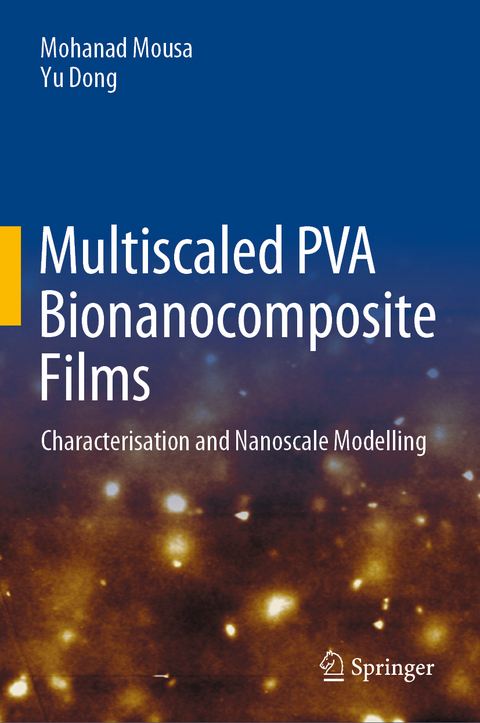
Multiscaled PVA Bionanocomposite Films
Springer Verlag, Singapore
978-981-15-8770-2 (ISBN)
Mohanad Mousa is currently working at Shatra Technical Institute, Southern Technical University, Iraq after recently graduated with a PhD degree in mechanical engineering from Curtin University, Australia.He was previously an Assistant Lecturer at the Department of Mechanical Engineering, Shatra Technical Institute, Iraq. Mohanad has a wide range of research interests in bionanocomposites, nanomaterials, biopolymers and welding of metals. Dr. Yu Dong is a Senior Lecturer in Mechanical Engineering, School of Civil and Mechanical Engineering at Curtin University, Australia. He has extensive research expertise in polymer nanocomposites, electrospun nanofibers, green composites, micromechanical modeling, nanomanufacturing and design of experiments. He is a Lead Editor for “Electrospun Polymers and Composites: Ultrafine Materials, Higher Performance Fibers and Wearables”, Elsevier, UK,“Manufacturing, Characterisation and Properties of Advanced Nanocomposites”, MDPI, Switzerland, and “Fillers and Reinforcements for Advanced Nanocomposites”, Elsevier, UK, and a Sole Editor for “Nanostructures: Properties, Production Methods and Applications”, NOVA Science Publishers, USA. Dr. Dong is a Journal Associate Editor for Frontiers in Materials (Polymeric and Composite Materials section) and Applied Nanoscience.
Chapter 1. Introduction.- Chapter 2 Materials, methodology and characterisation techniques.- Chapter 3 PVA/BC bionancomposite films with particle size effect.- Chapter 4 PVA bionanocomposite films with different particle shapes and structures.- Chapter 5 3D interphase of PVA bionanocomposite films.- Chapter 6 Micromechanical modelling of PVA bionanocomposite films.
| Erscheinungsdatum | 16.01.2021 |
|---|---|
| Zusatzinfo | 70 Illustrations, color; 14 Illustrations, black and white; XI, 179 p. 84 illus., 70 illus. in color. |
| Verlagsort | Singapore |
| Sprache | englisch |
| Maße | 155 x 235 mm |
| Themenwelt | Naturwissenschaften ► Physik / Astronomie ► Atom- / Kern- / Molekularphysik |
| Naturwissenschaften ► Physik / Astronomie ► Festkörperphysik | |
| Naturwissenschaften ► Physik / Astronomie ► Theoretische Physik | |
| Technik ► Elektrotechnik / Energietechnik | |
| Technik ► Maschinenbau | |
| ISBN-10 | 981-15-8770-1 / 9811587701 |
| ISBN-13 | 978-981-15-8770-2 / 9789811587702 |
| Zustand | Neuware |
| Haben Sie eine Frage zum Produkt? |
aus dem Bereich


